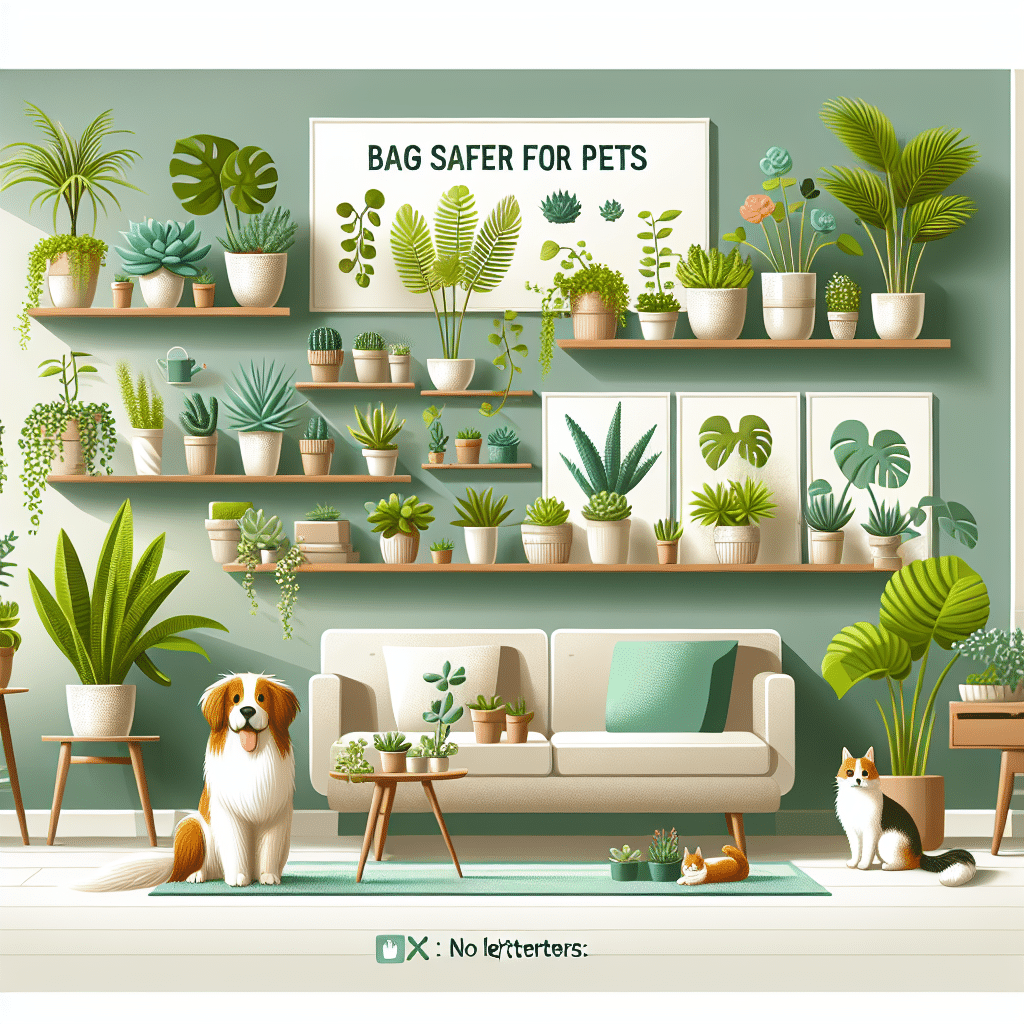Beginner-Friendly Care Instructions for Pet-Safe Houseplants
Understanding Pet-Safe Plants
Before delving into care instructions, it’s crucial to know which houseplants are safe for pets. Many common houseplants can be toxic to cats and dogs, while others are completely safe. Pet-safe options include Spider Plants, Boston Ferns, and Areca Palms. These plants not only thrive indoors, but they also pose no threat to curious pets.
Choosing the Right Pot
Selecting the correct pot is the first step in ensuring the health of your houseplant. Opt for pots with drainage holes to prevent water logging, which can lead to root rot. Terracotta and ceramic are ideal materials due to their breathability. Always choose a pot that is slightly larger than the plant’s root ball to provide room for growth.
Ideal Soil Mix
The choice of soil affects the overall health of your houseplant. A general-purpose potting mix is often sufficient for many pet-safe plants. However, specific plants may require a specialized soil blend. For instance, succulents benefit from a gritty mix, while ferns thrive in a moisture-retentive blend. Ensure your chosen soil is free from harmful chemicals.
Light Requirements
Light exposure is crucial for optimal growth. Pet-safe houseplants generally require indirect light, though some, like succulents, need direct sunlight. Observe the light conditions in your home. If your plant-leaf colors start to fade or your plant becomes leggy, it might indicate insufficient light. Here’s a breakdown of common light ranges:
- Low Light: Snake Plants, ZZ Plants.
- Medium Light: Spider Plants, Peace Lilies.
- Bright Light: Areca Palms, Succulents.
Watering Guidelines
One of the most common mistakes in houseplant care is overwatering. Each plant has distinct watering needs. Generally, allow the top 1-2 inches of soil to dry out between watering sessions. Use your finger to check moisture levels or invest in a moisture meter for accuracy. Signs of overwatering include yellow leaves or mushy stems, while underwatering typically presents as wilting or browning leaf tips.
Humidity and Temperature Requirements
Humidity levels can significantly impact plant health, especially for tropical varieties. Most pet-safe houseplants enjoy humidity levels between 40-60%. If your office or home is dry, consider using a humidifier or placing a tray of water near your plants.
Temperature-wise, most houseplants thrive in temperatures ranging from 65°F to 75°F, avoiding exposure to drafts or sudden temperature changes.
Fertilization Schedule
Plants, much like people, require nutrients to thrive. A balanced, water-soluble fertilizer can enhance growth. Typically, fertilize every 4-6 weeks during the growing season (spring and summer). A diluted formula is best for beginners—this reduces the risk of nutrient burn. Pay attention to brand instructions, as some fertilizers may vary in intensity.
Pruning and Grooming
Regular upkeep contributes to a plant’s health and aesthetic. Remove dead or yellow leaves promptly to encourage new growth and prevent pests. Use clean, sharp scissors for pruning to avoid damaging the plant. Additionally, wiping down leaves with a damp cloth removes dust, ensuring optimal photosynthesis.
Pests and Diseases to Watch For
Being proactive about pests can save your plants. Keep an eye out for spider mites, aphids, and mealybugs—common pests affecting houseplants. If you spot pests, isolate the affected plant and treat it with insecticidal soap or neem oil. Fungal issues can occur in overly damp conditions; improve airflow and allow the soil to dry between watering to mitigate these concerns.
Repotting Practices
Plants outgrow their pots over time, necessitating repotting. Look for signs, such as roots growing out of the drainage holes or slower growth despite proper care. Select a pot one size larger than the current one and gently remove the plant from its pot. Loosen any tightly bound roots and place it into the new pot with fresh soil. Water thoroughly after repotting to settle the soil.
Seasonal Changes
As seasons shift, so do the needs of your plants. For example, during winter, many plants enter a dormant phase and require less water. Be vigilant about light exposure as days grow shorter; you may need to rotate your plants or supplement with grow lights. Adjust your care routine according to your plant’s seasonal needs to promote consistent health.
Safe Placement in the Home
When placing your pet-safe houseplants, think about both aesthetics and safety. Position plants where pets cannot easily reach, avoiding high surfaces or windowsill ledges. Create a designated plant area to help prevent accidental tipping or ingestion. A decorative plant shelf can keep plants visually appealing while maintaining pet safety.
Engaging with Your Plants
Lastly, integrating your pet-safe houseplants into your daily life can enhance your connection to them. Spend a few moments each week to observe growth and changes, note any new leaves, or simply delight in their beauty. Engaging with your plants fosters a loving environment and encourages you to become more diligent in their care.
By following these detailed care instructions, you can create a thriving collection of pet-safe houseplants in your home. With time, attention, and a genuine interest in nurturing these plants, you’ll find joy in cultivating a green sanctuary that’s safe for your furry companions.
